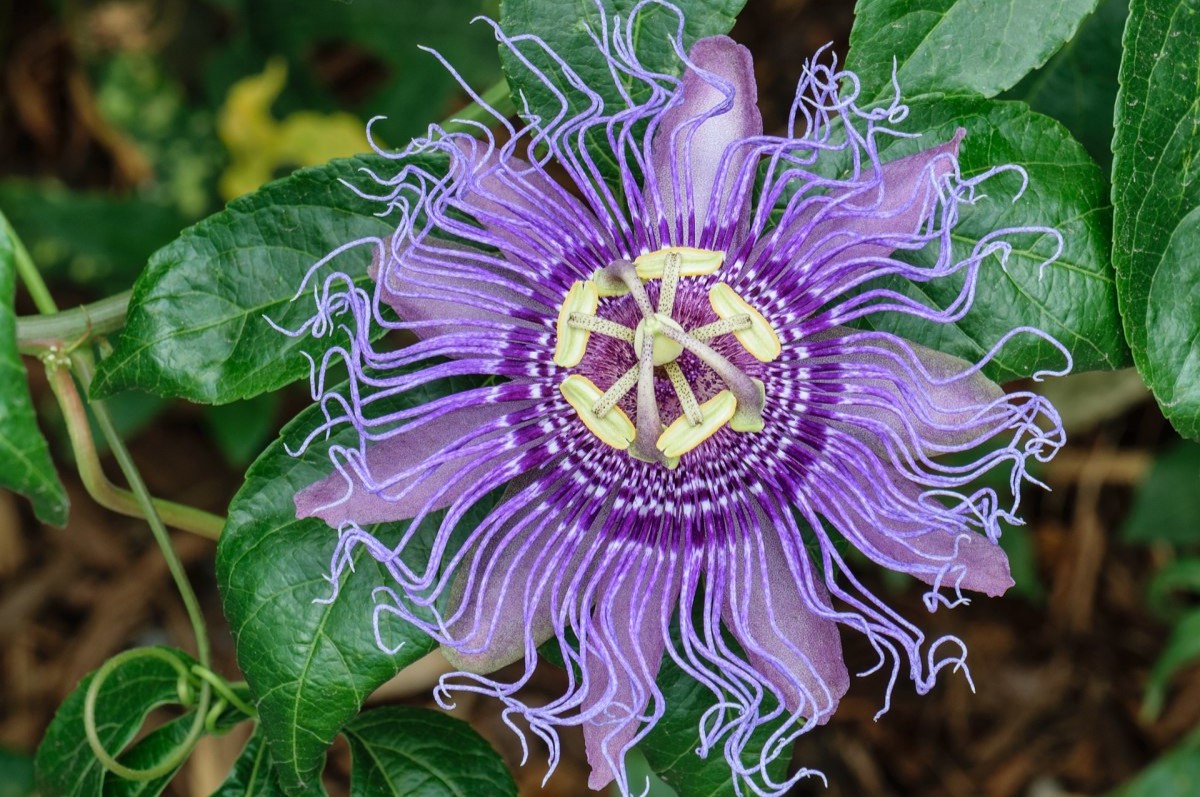
Plants are more than just greenery; they are fascinating organisms with unique traits and behaviors. Ever wondered how some plants can survive in the harshest conditions or why certain flowers bloom only at night? Botany holds many secrets waiting to be uncovered. From the tallest trees to the tiniest mosses, each plant has a story. Some can even move or trap insects for food! Whether you're a gardening enthusiast or just curious about nature, these 37 facts will open your eyes to the incredible world of plants. Get ready to be amazed by the wonders of the plant kingdom!
Key Takeaways:
- Fascinating Plants: Carnivorous plants like the Venus Flytrap and Pitcher Plants have evolved unique ways to trap and digest insects. Desert survivors like the Saguaro Cactus and Aloe Vera store water to thrive in harsh environments.
- Ancient and Medicinal Marvels: Ginkgo Biloba and Echinacea are ancient plants with medicinal properties. They've been used for centuries to treat ailments. These plants are truly nature's treasures!
Carnivorous Plants
Carnivorous plants have fascinated botanists and nature enthusiasts for centuries. These unique flora have adapted to nutrient-poor environments by evolving mechanisms to trap and digest insects and small animals.
- Venus Flytrap: The Venus Flytrap snaps shut when its sensitive hairs are triggered twice by an unsuspecting insect. This rapid movement is one of the fastest in the plant kingdom.
- Pitcher Plants: Pitcher plants lure insects into their deep, slippery cavities filled with digestive enzymes. The insects drown and are slowly digested.
- Sundews: Sundews have sticky, glandular hairs on their leaves that trap insects. The plant then secretes digestive enzymes to break down the prey.
- Bladderworts: Bladderworts are aquatic carnivorous plants that use small bladder-like traps to suck in tiny prey with lightning speed.
- Butterworts: Butterworts have greasy leaves that trap insects. The leaves then curl around the prey to digest it.
Desert Survivors
Desert plants have evolved incredible adaptations to survive in harsh, arid environments. These plants can store water, reduce water loss, and thrive in extreme temperatures.
- Saguaro Cactus: The Saguaro Cactus can store up to 200 gallons of water in its thick, ribbed stems. This allows it to survive long periods of drought.
- Joshua Tree: Joshua Trees have deep roots that can reach underground water sources. Their spiky leaves reduce water loss.
- Aloe Vera: Aloe Vera stores water in its thick, fleshy leaves. This plant is also known for its medicinal properties.
- Agave: Agave plants have thick, succulent leaves that store water. They can live for several decades and produce a spectacular flower spike before dying.
- Barrel Cactus: Barrel Cacti have a ribbed structure that expands to store water during rare rainfalls. Their spines provide shade and reduce water loss.
Unique Reproduction
Plants have developed various fascinating methods of reproduction to ensure their survival and spread. These methods range from self-pollination to complex interactions with animals.
- Corpse Flower: The Corpse Flower emits a foul odor resembling rotting flesh to attract pollinators like flies and beetles.
- Rafflesia: Rafflesia produces the largest individual flower in the world, which can reach up to 3 feet in diameter. It also emits a strong odor to attract pollinators.
- Titan Arum: Also known as the "corpse plant," Titan Arum has a massive inflorescence that can reach over 10 feet tall. It blooms rarely, and its odor attracts carrion beetles and flies.
- Bee Orchid: The Bee Orchid mimics the appearance and scent of a female bee, tricking male bees into attempting to mate with it, thereby facilitating pollination.
- Wolffia: Wolffia, or watermeal, is the smallest flowering plant in the world. It reproduces rapidly through budding.
Ancient Plants
Some plants have been around for millions of years, surviving through various climatic changes and geological events. These ancient plants provide a glimpse into Earth's distant past.
- Ginkgo Biloba: Ginkgo Biloba is a living fossil, with a lineage dating back over 200 million years. It has unique fan-shaped leaves and is known for its resilience.
- Welwitschia: Welwitschia is a bizarre plant found in the Namib Desert. It has only two leaves that grow continuously throughout its life, which can span over a thousand years.
- Wollemi Pine: The Wollemi Pine was thought to be extinct until it was rediscovered in 1994. It dates back to the time of the dinosaurs.
- Cycads: Cycads are ancient seed plants that have existed for over 300 million years. They have a palm-like appearance and produce large cones.
- Horsetails: Horsetails are ancient plants that have been around for over 100 million years. They have jointed stems and reproduce through spores.
Medicinal Marvels
Many plants have been used for their medicinal properties for centuries. These plants contain compounds that can treat various ailments and promote health.
- Willow Bark: Willow Bark contains salicin, which is a precursor to aspirin. It has been used for centuries to relieve pain and reduce fever.
- Ginseng: Ginseng is a popular medicinal plant known for its ability to boost energy, reduce stress, and improve cognitive function.
- Echinacea: Echinacea is commonly used to boost the immune system and reduce the severity of colds and flu.
- Turmeric: Turmeric contains curcumin, which has powerful anti-inflammatory and antioxidant properties. It is used to treat various conditions, including arthritis and digestive issues.
- Lavender: Lavender is known for its calming effects. It is used to reduce anxiety, improve sleep, and alleviate headaches.
Unusual Growth Habits
Some plants exhibit growth habits that are quite unusual and fascinating. These habits help them adapt to their environments and ensure their survival.
- Banyan Tree: The Banyan Tree produces aerial roots that grow down from its branches and take root in the soil, creating a network of trunks.
- Strangler Fig: Strangler Figs start as epiphytes, growing on other trees. They send down roots that eventually envelop and "strangle" the host tree.
- Sensitive Plant: The Sensitive Plant, or Mimosa pudica, has leaves that fold up when touched. This rapid movement is a defense mechanism against herbivores.
- Walking Palm: The Walking Palm appears to "walk" by growing new roots in the direction of sunlight and allowing older roots to die off.
- Resurrection Plant: The Resurrection Plant can survive extreme dehydration. When water is available, it quickly rehydrates and resumes normal growth.
Edible Oddities
Some plants produce edible parts that are unusual or unexpected. These plants offer unique flavors and nutritional benefits.
- Breadfruit: Breadfruit is a starchy fruit that can be cooked and eaten like bread. It is a staple food in many tropical regions.
- Jackfruit: Jackfruit is the largest tree-borne fruit in the world. Its flesh can be used as a meat substitute in vegetarian dishes.
- Durian: Durian is known as the "king of fruits" due to its strong odor and unique taste. It is highly prized in Southeast Asia.
- Salsify: Salsify, also known as the "oyster plant," has roots that taste like oysters when cooked.
- Romanesco: Romanesco is a type of broccoli with a striking fractal pattern. It has a mild, nutty flavor and is rich in vitamins.
Rare and Endangered
Some plants are rare and endangered due to habitat loss, climate change, and human activities. Conservation efforts are crucial to protect these unique species.
- Ghost Orchid: The Ghost Orchid is a rare and endangered orchid found in Florida and Cuba. It has no leaves and relies on a symbiotic relationship with fungi for nutrients.
- Middlemist's Red: Middlemist's Red is one of the rarest flowers in the world, with only two known specimens. It is a type of camellia originally from China.
Nature's Green Wonders
Plants are more than just greenery. They play crucial roles in our lives and the planet's health. From the giant sequoias towering over forests to the tiny duckweed floating on ponds, each plant has unique characteristics. Some, like the Venus flytrap, have evolved fascinating ways to survive, while others, like the baobab tree, can live for thousands of years.
Understanding these facts not only deepens our appreciation for nature but also highlights the importance of conservation. Plants provide oxygen, food, medicine, and even inspiration. Next time you see a plant, remember it's part of a vast, interconnected ecosystem.
So, whether you're a budding botanist or just someone who enjoys a walk in the park, keep exploring the world of plants. There's always something new to learn and marvel at in nature's green wonders.
Frequently Asked Questions
Was this page helpful?
Our commitment to delivering trustworthy and engaging content is at the heart of what we do. Each fact on our site is contributed by real users like you, bringing a wealth of diverse insights and information. To ensure the highest standards of accuracy and reliability, our dedicated editors meticulously review each submission. This process guarantees that the facts we share are not only fascinating but also credible. Trust in our commitment to quality and authenticity as you explore and learn with us.


